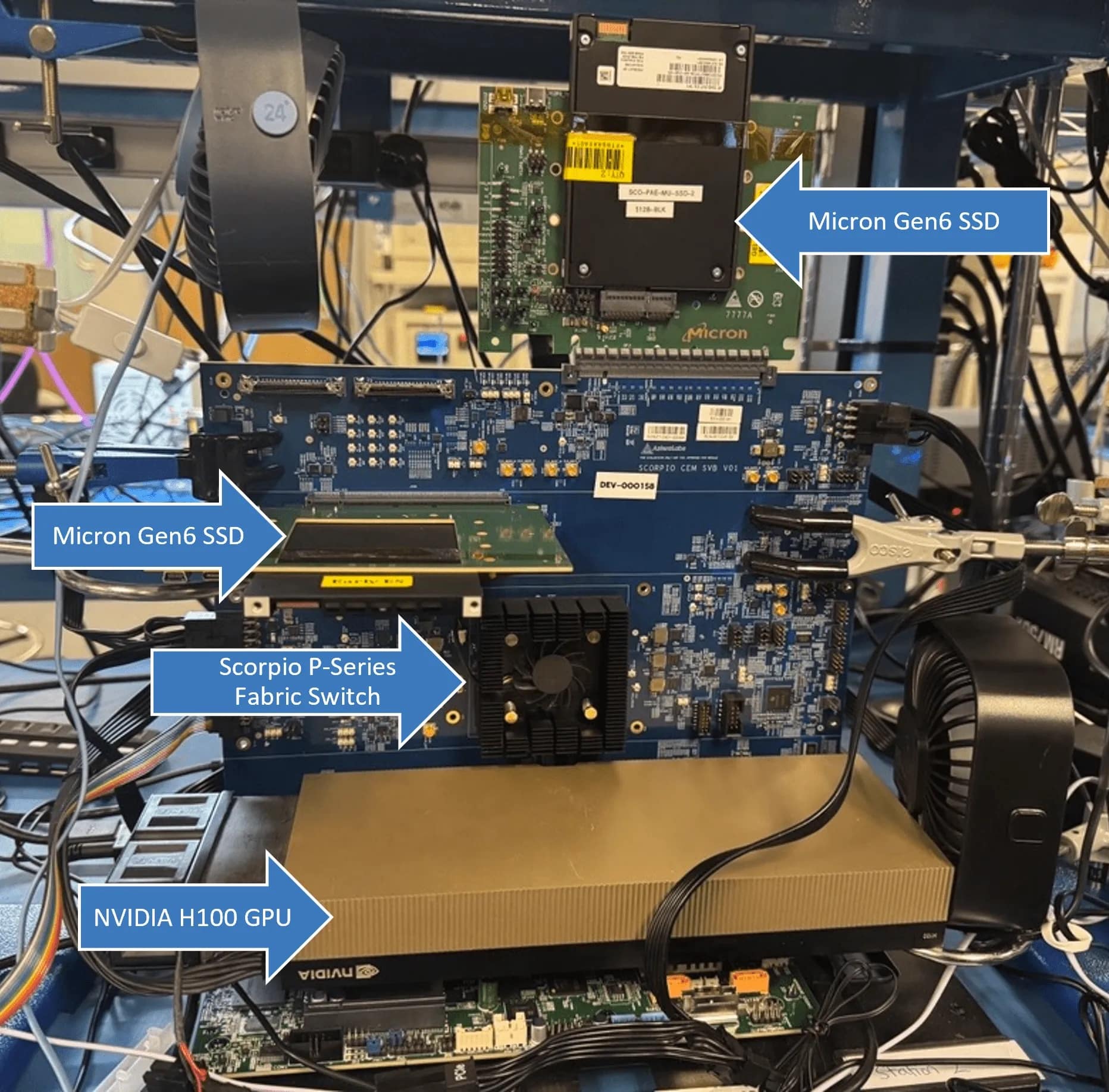The storage industry takes a significant leap forward with the unveiling of the first functional PCIe 6.0 SSD in history. Micron, which had previously announced its plans last year, has revealed its first prototype capable of achieving transfer speeds of 27 GB/s, marking a milestone in the development of this new technology.
With this advancement, the data center and artificial intelligence sectors are beginning to prepare their infrastructure for the arrival of ultra-fast storage units, although there is still a long way to go before these solutions reach the consumer market.
Micron and the PCIe 6.0 Challenge
Micron has been working in silence over the past few months on the development of its PCIe 6.0 SSD, a standard that doubles the bandwidth compared to its predecessor, PCIe 5.0. With a transmission capacity of up to 27 GB/s, this new technology leaves the most advanced SSDs currently available far behind.
The showcased prototype was presented at an event by Astera Labs, a company that has integrated Micron’s unit into its Scorpio P-Series switch, a component with 64 PCIe 6.0 lanes distributed across four ports. This setup allowed for a demonstration of the impressive speeds of the SSD in a high-performance data center environment.
Additionally, NVIDIA participated in the demonstration, connecting the SSD to an NVIDIA H100 GPU via its Magnum IO GPUDirect Storage technology, which enabled direct communication between the SSD and the graphics card without needing to go through the CPU.
An Unprecedented Performance Leap
Initial measurements have confirmed that Micron’s PCIe 6.0 SSD achieves a throughput of 25.28 GiB/s, which is equivalent to 27.14 GB/s. This performance represents a drastic improvement over PCIe 5.0 SSDs, which were already reaching the limits of the available bandwidth in that generation.
To put it into perspective, the new standard allows for doubling the transfer speed, which translates into greater efficiency for intensive workloads, such as analyzing large volumes of data, modeling in artificial intelligence, and conducting scientific simulations.
Although the size of the prototype is considerable, comparable to that of an ITX graphics card, this is typical for early versions of hardware before they are refined for mass production.
Applications and Future of PCIe 6.0
As expected, the initial application of these ultra-fast SSDs will be focused on data centers and high-performance servers, where access speed to information is critical. Companies that handle large volumes of data in cloud, AI, and real-time analytics will be the first to adopt this technology.
For home PC users, the road ahead is still long. It is estimated that the first PCIe 6.0 SSDs for consumers may arrive by 2027, by which time current PCIe 5.0 SSDs will have reached their maximum performance and become more widespread in the market.
In the meantime, the PCI-SIG, the organization responsible for defining PCIe standards, is already working on the next generation, PCIe 7.0, which promises even higher speeds and could arrive shortly after 2030.
Conclusion
The Micron PCIe 6.0 SSD marks the beginning of a new era in data storage, with transfer speeds never before seen in a commercial unit. Although its availability in the consumer market is still far off, its impact on data centers and applications in AI, science, and advanced computing will be immediate.
With this advancement, the industry is increasingly nearing a future where the boundaries of storage and data processing blur, enabling the development of faster and more efficient technologies in the coming years.
via: Mydrivers

